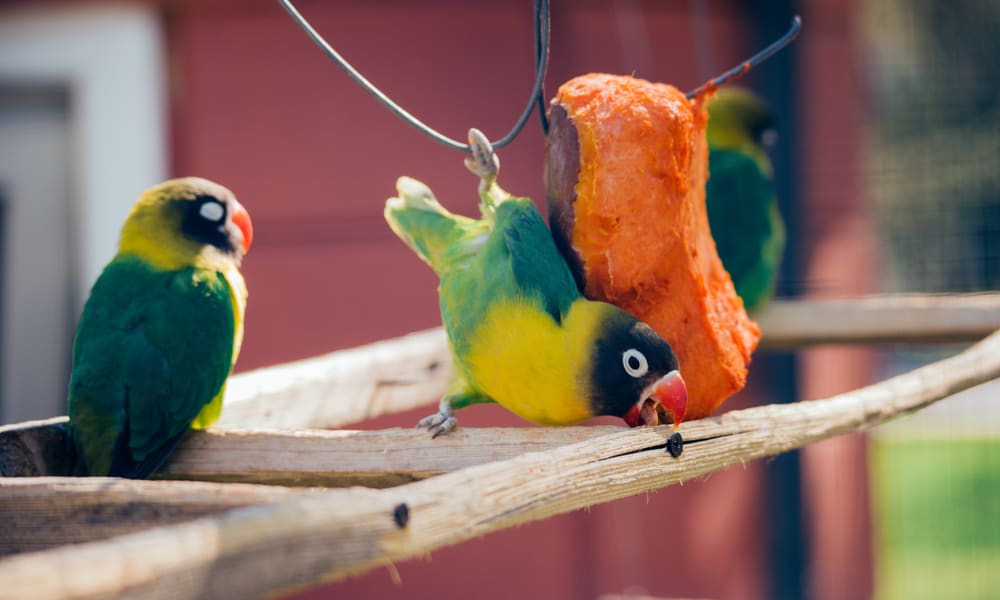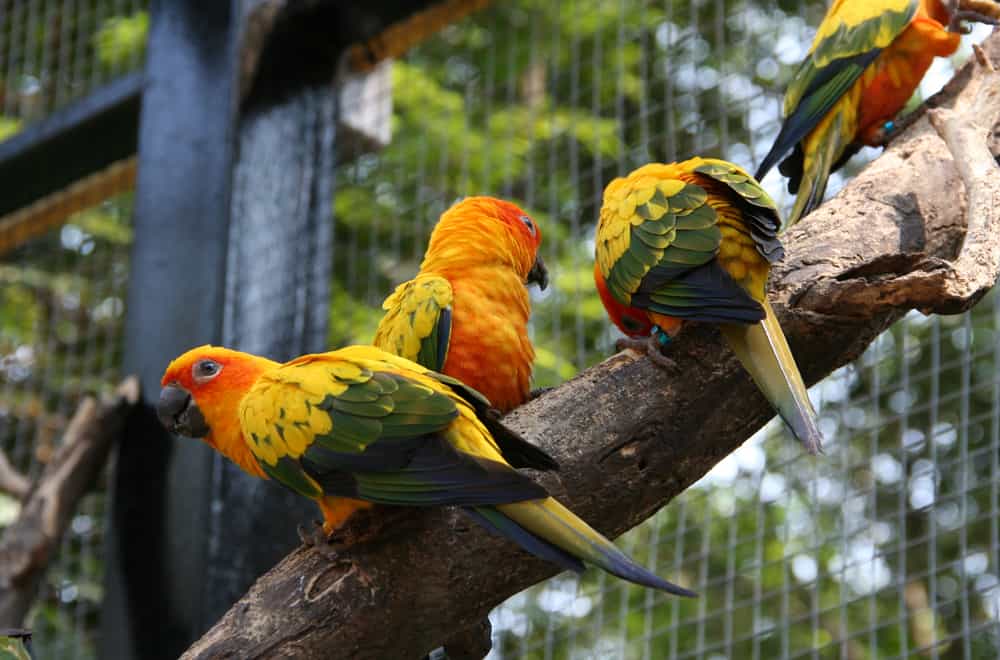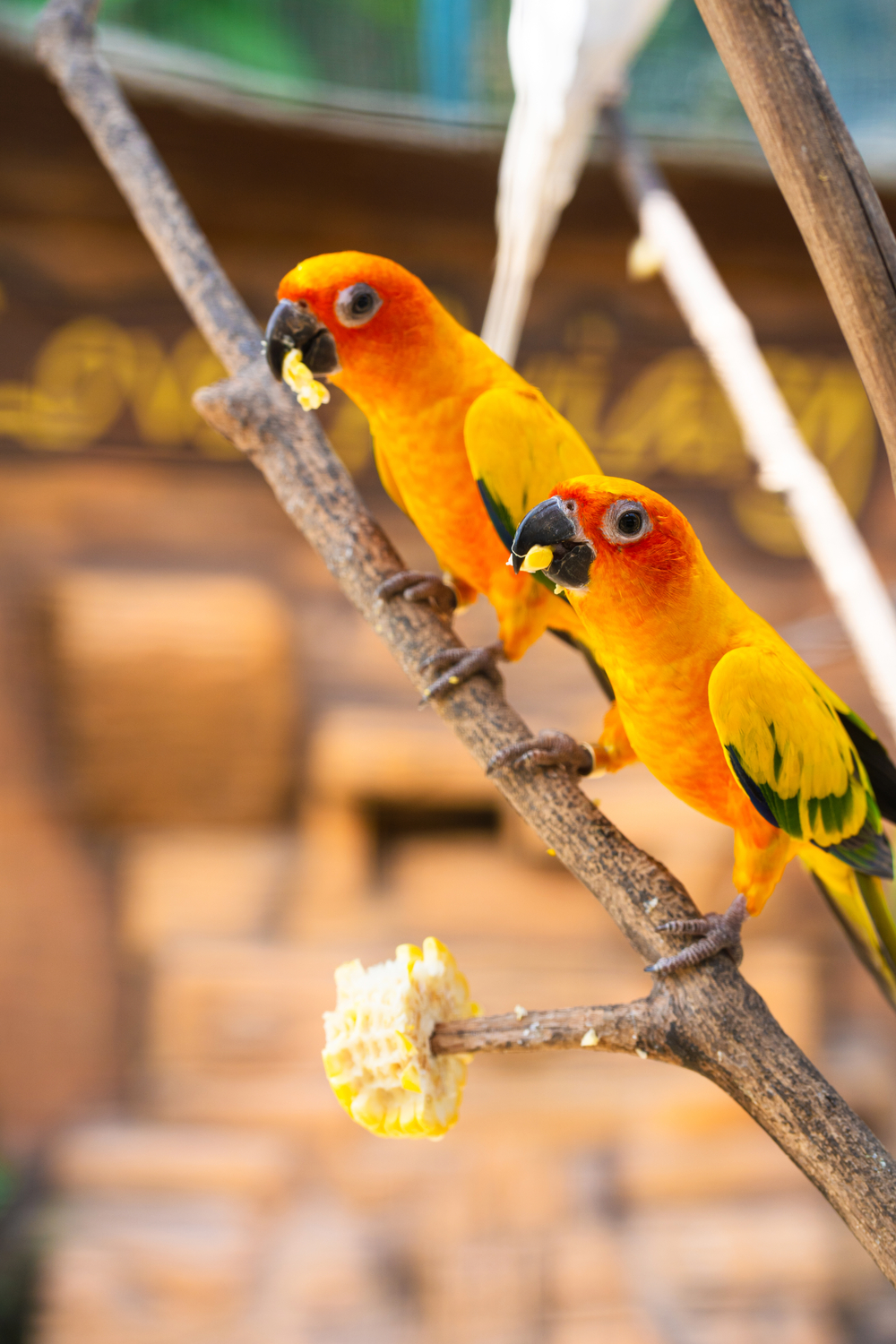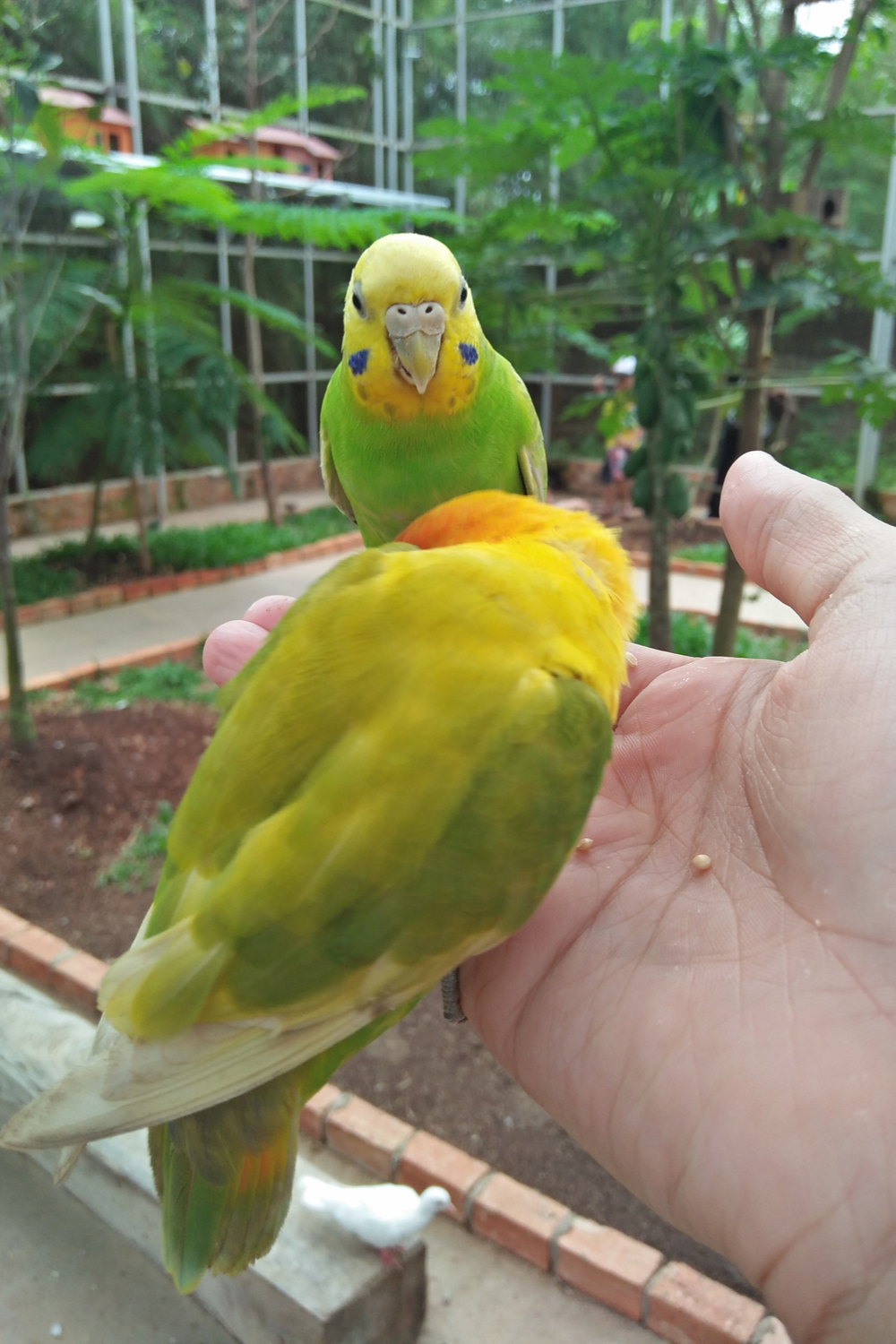If you’re looking to keep lovebirds as pets, you may be wondering, “What do lovebirds eat?” Well, in the wild, love birds, eat anything they can find but their diet mostly includes plant matter. However, in captivity where they don’t have the freedom to look for their own food, lovebirds must be offered nutritious options like pellets, fruits, and vegetables.
Read on to learn more about lovebirds’ diet.
Lovebird Habits and Biology
Love birds are little, short-tailed birds native to sub-Saharan Africa and Madagascar. They are among the smallest and chunkiest members of the parrot family, growing only 6 inches in length. There are 9 known species of love birds, three of which are kept by humans as pets. They include the peach-faced lovebirds, masked lovebirds, and Fischer’s lovebirds.
The original habitat of all lovebirds is dry woodlands, scrub forests, and savannas, but for the most part, lovebirds will often spend time near the edges of forests feeding on fruits, seeds, and grasses.
They can be identified by their distinctive green color, but depending on the species, the birds may also have yellow, orange, red, black, or grey colors on their neck and head.
Lovebirds are social and love to be around each other. You will often see them showing affection and cuddling up to form close bonds. Sometimes they will also look for food together.
These birds are monogamous. Once they have found a mate, they will not pay attention to any other female their entire life. Males will often court females by bringing them small pieces of food. Some species may even sing or dance to attract females.
When it comes to breeding, the females will lay between 4 and 6 eggs that will take around 20 days to hatch. Once they have hatched, both parents will care for the hatchlings, feeding and protecting them from predators until they have reached an age that they can fend for themselves which is around 30 days.
At 12 months, the young birds will have matured enough to breed. They will find a mate and build a nest together away from the family. Both sexes will participate in the building of the nesting area, with the females carrying the building materials. To avoid predators, these nests will be situated in holes in shrubs, trees, and rocks.
Fun Fact: Although love birds belong to the parrot family, they do not talk. They do, however, have the ability to mimic sounds and may sometimes repeat simple noises like whistles or doorbell sounds.
What Do Lovebirds Eat in the Wild?
Lovebirds are herbivores, meaning, their diet mostly comprises plant material. However, some species are general feeders and will feast on anything that comes their way as long as it can fit in their tiny mouths. Others are specialists and will only eat specific plant material.
The birds will mostly forage in flocks looking for plant matter, small insects, and small invertebrates. Most of the foraging will occur on the ground especially for those species that prefer more seeds.
When courting, lovebirds will often feed each other. In almost all instances, mating always happens when the males feed their females. All species of lovebirds engage in courtship feeding.
What Do Lovebirds Like to Eat?
While their diet will solely depend on the bird’s species, most lovebirds will feed on the following:
- Seeds
- Fruits
- Berries
- Grasses
- Grains
- Leaf buds
- Figs
- Small insects like flies
- Small invertebrates spiders and worms
How Lovebirds’ Diet Benefits the Ecosystem
- Studies show that lovebirds eat up to 35% of insects and 15% of worms every year, many of which are a nuisance to farmers. Reducing the population of these bugs ensures proper crop growth, which increases yield.
- Lovebirds also help in dispersing seeds. They carry them in their intestines and drop them in new places, giving rise to new vegetation.
What Do Lovebirds Eat as Pets?
While lovebirds consume plenty of seed-based foods in their natural habitat, seeds are just a small fraction of their diet. In fact, lovebirds that only feed on seeds can easily suffer from malnutrition especially if they are domesticated. Lovebirds owners, therefore, should pick either a seed-based diet or a pelleted diet then throw in a couple supplements to ensure a healthy meal.
Here is a quick walkthrough of some of the foods that will make a nutritionally balanced diet for pet lovebirds:
- Seeds: If you are not feeding your lovebirds pellets, seeds should not make up any more than 55% of the birds’ total daily diet. Also, you should always ensure the seeds are fresh and in a wide variety.
- Pellets: Many lovebird owners prefer giving their pets a pelleted diet because it is nutritionally balanced. Essential nutrients are usually well distributed in the pellets to make sure the birds eat the appropriate proportions.
- Fruits and vegetables: No matter which diet you choose, make sure to supplement it with fresh fruits and veggies. Offer these in small quantities every day so they make about 20% of your pets’ diet. Give different varieties so your birds can have a rich meal.
- Treats: Sunflower seeds and other high-fat seeds make great treats for lovebirds and so do shelled nuts, mealworms, and boiled eggs. Give these to your lovebirds 2 to 3 times a week. You can buy live mealworms from the local pet store.
- Water: In addition to healthy foods, make sure your lovebirds have access to clean, fresh water too. Also, it’s not uncommon for birds to get their water dirty with poop or dropped seeds, so check the dish frequently and change the water if it’s messy.
Human food can also be fed to lovebirds but in moderation. Lovebirds will enjoy a small piece of lean meat, egg, cheese, or fish once in a while. The only type of food that should not be given to lovebirds or any other bird for that matter is chocolate, junk food, alcoholic beverages, or products containing caffeine, as these may be toxic to the bird.
Certain fruits like lime, avocado, navy beans, and rhubarb are also not recommended for lovebirds, as they can damage their liver.
Tips to Feed Lovebirds
1. Choose Pellet Food Based on Your Lovebirds’ Age
There are different pallet foods to feed lovebirds at different stages of their life. Make sure to pick a food type that best matches the age of your feathered friends. Do your research to know what type of pellets to feed baby birds and what to feed mature birds. Importantly, ensure that the food is made from natural ingredients and doesn’t have any additives or preservatives.
2. Create a Feeding Schedule
Try to feed your birds at a specific time every day. That way, they will know when they will be fed and you can avoid overfeeding.
3. Feed Your Birds in Separate Bowls
If you have multiple lovebirds in one cage, have a food bowl for each bird to prevent them from pecking or fighting over meals while they eat. This will also help you keep track of each bird’s eating habits to identify those who aren’t feeding as they should.
4. Feed Baby Lovebirds by Hand
While this can be time-consuming, hand-feeding newly hatched or baby love birds ensures the little ones are actually eating something. Most of the time, infant birds that are fed by hand grow much faster and stronger than those who are left to fend for themselves. Hand-feeding also helps create a stronger bond between you and the birds.
5. Provide Enough Food
Lovebirds should feed at least once a day. You will know when the birds have had enough when their crop bulges. The crop is the section of the bird’s stomach that inflates below its neck as it eats. Lovebirds should be fed until their crops have bulged and not anymore after that.
6. Clean the Birds’ Beaks After Every Meal
Once your lovebirds are done eating, grab a clean piece of cloth and gently wipe off their beaks. They will most likely go to sleep after this.
7. Look for Foods That Meet Your Bird’s Current Nutritional Needs
Lovebirds that are injured, stressed, laying eggs, raising young ones, or those who are extremely young may have special nutritional requirements. Get pelleted food designed to feed birds in these situations. If you aren’t sure, consult your veterinarian.
8. Clean Fruits Before Feeding Them to Your Lovebirds
Wash all fruits and vegetables thoroughly before feeding them to your birds to get rid of any chemicals. It’s also important that you cut them into smaller pieces so they can be more manageable.
Summary
Lovebirds consume plenty of stuff in the wild, which is why they should not be fed only seeds and nuts when kept as pets. It’s important that owners supplement their birds’ diet with fresh fruits and vegetables to keep them healthy. Human foods, especially those that have high sugar content, should be offered in moderation.




Thanks for sharing this. It sure will help me feed the birds in my area better.